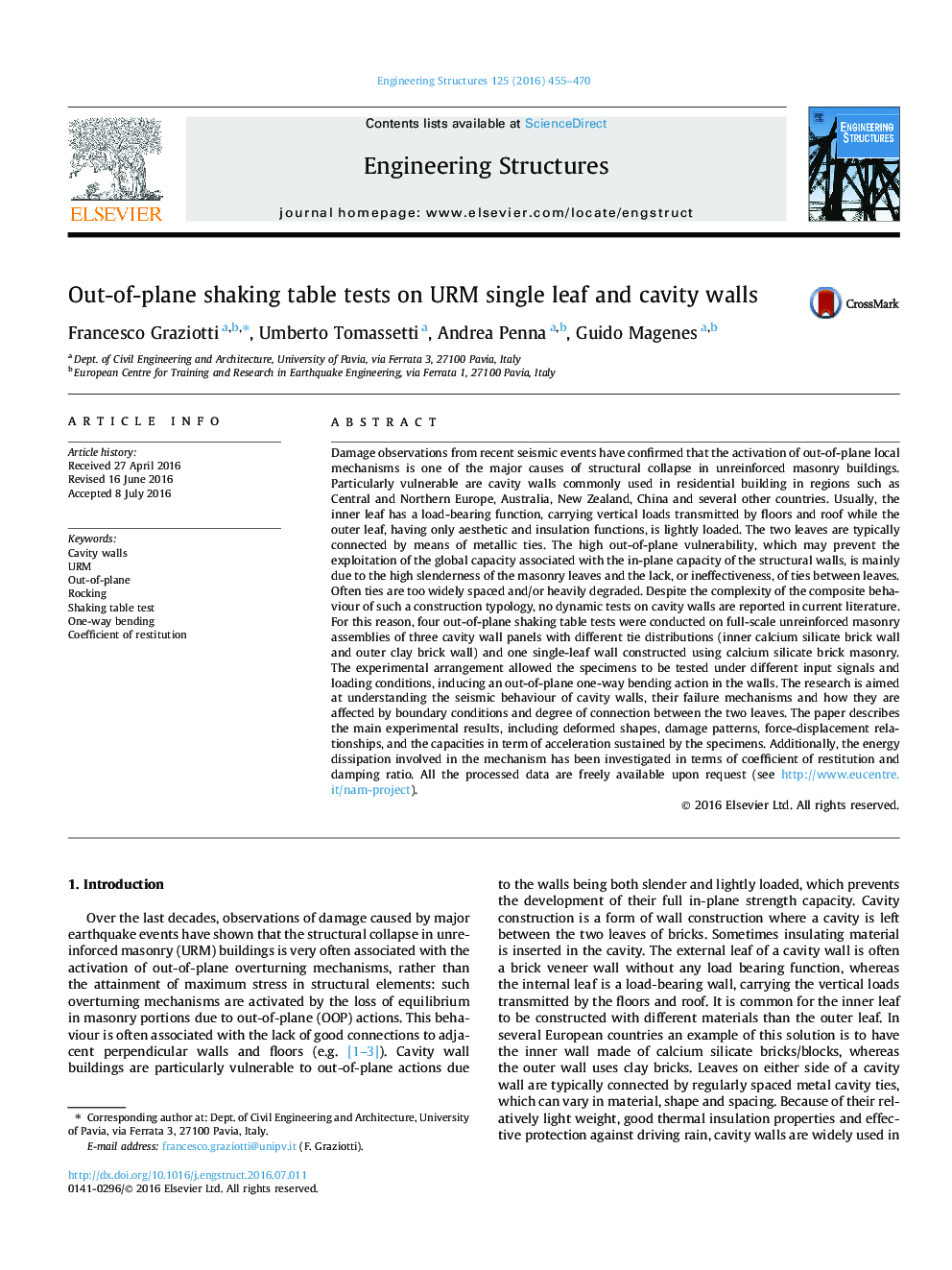| کد مقاله | کد نشریه | سال انتشار | مقاله انگلیسی | نسخه تمام متن |
|---|---|---|---|---|
| 6739755 | 504319 | 2016 | 16 صفحه PDF | دانلود رایگان |
عنوان انگلیسی مقاله ISI
Out-of-plane shaking table tests on URM single leaf and cavity walls
دانلود مقاله + سفارش ترجمه
دانلود مقاله ISI انگلیسی
رایگان برای ایرانیان
کلمات کلیدی
موضوعات مرتبط
مهندسی و علوم پایه
علوم زمین و سیارات
مهندسی ژئوتکنیک و زمین شناسی مهندسی
پیش نمایش صفحه اول مقاله

چکیده انگلیسی
Damage observations from recent seismic events have confirmed that the activation of out-of-plane local mechanisms is one of the major causes of structural collapse in unreinforced masonry buildings. Particularly vulnerable are cavity walls commonly used in residential building in regions such as Central and Northern Europe, Australia, New Zealand, China and several other countries. Usually, the inner leaf has a load-bearing function, carrying vertical loads transmitted by floors and roof while the outer leaf, having only aesthetic and insulation functions, is lightly loaded. The two leaves are typically connected by means of metallic ties. The high out-of-plane vulnerability, which may prevent the exploitation of the global capacity associated with the in-plane capacity of the structural walls, is mainly due to the high slenderness of the masonry leaves and the lack, or ineffectiveness, of ties between leaves. Often ties are too widely spaced and/or heavily degraded. Despite the complexity of the composite behaviour of such a construction typology, no dynamic tests on cavity walls are reported in current literature. For this reason, four out-of-plane shaking table tests were conducted on full-scale unreinforced masonry assemblies of three cavity wall panels with different tie distributions (inner calcium silicate brick wall and outer clay brick wall) and one single-leaf wall constructed using calcium silicate brick masonry. The experimental arrangement allowed the specimens to be tested under different input signals and loading conditions, inducing an out-of-plane one-way bending action in the walls. The research is aimed at understanding the seismic behaviour of cavity walls, their failure mechanisms and how they are affected by boundary conditions and degree of connection between the two leaves. The paper describes the main experimental results, including deformed shapes, damage patterns, force-displacement relationships, and the capacities in term of acceleration sustained by the specimens. Additionally, the energy dissipation involved in the mechanism has been investigated in terms of coefficient of restitution and damping ratio. All the processed data are freely available upon request (see http://www.eucentre.it/nam-project).
ناشر
Database: Elsevier - ScienceDirect (ساینس دایرکت)
Journal: Engineering Structures - Volume 125, 15 October 2016, Pages 455-470
Journal: Engineering Structures - Volume 125, 15 October 2016, Pages 455-470
نویسندگان
Francesco Graziotti, Umberto Tomassetti, Andrea Penna, Guido Magenes,